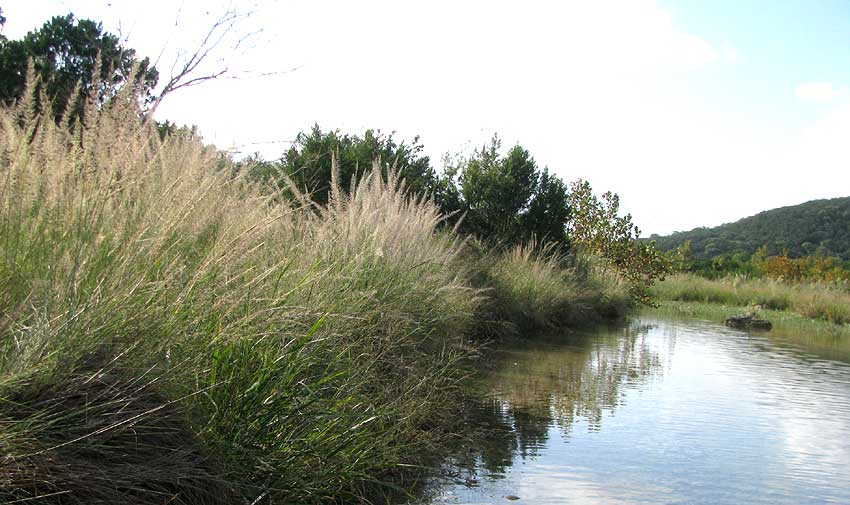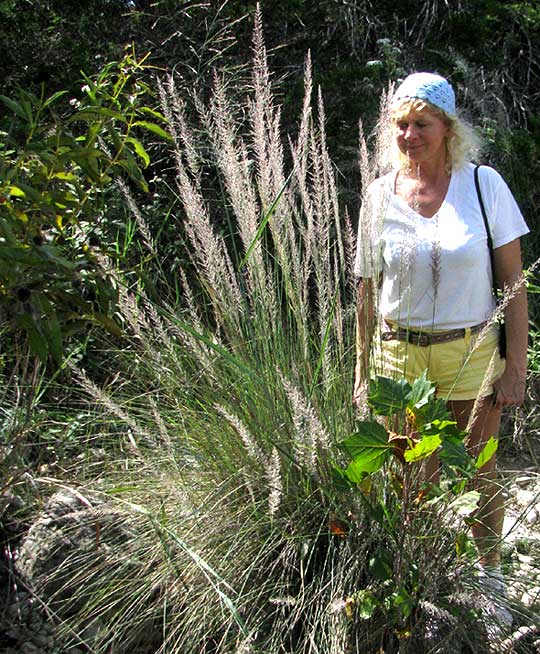Excerpts from Jim Conrad's
Naturalist Newsletter

from the the October 21, 2012 Newsletter issued from the valley of the Dry Frio River in northern Uvalde County, southwestern Texas, on the southern border of the Edwards Plateau; elevation ~1750m (~5750 ft); N29.62°, W99.86°; USA
BIG MUHLY, THE STREAMSIDE GRASS
If you wade upstream for about ten minutes in the little Dry Frio River behind the cabin you arrive at the pretty spot shown above.
What's that big, pretty clumpgrass along the banks? Nowadays its slender, diffuse, pale, panicle-type inflorescences glow brightly in the sunlight, accenting the Dry Frio's borders very prettily. You can get a better idea of the grass's dimensions in a picture also featuring my Estonian lady-friend Malle below:

A close-up of the flowers with their purplish anthers dangling out appears below:

In that picture you see that each 1/8th-inch-long (3mm) floral unit, or spikelet, has white glumes at the base, and contains one or two florets with white lemmas and paleas, all about the same length. The lemmas bear slender, sharp, needlelike awns at their tips. These special grass-anatomy terms are covered at http://www.backyardnature.net/fl_grass.htm.
This wonderful grass is variously called Big Muhly, Blue Muhly Grass, Lindheimer Muhly and other names. It's MUHLENBERGIA LINDHEIMERI, native to arid northern Mexico, plus in the US it's limited to southwestern Texas's Edwards Plateau area.
It's a shame that such a beautiful grass doesn't occur in more of North America. However, horticulturalists have recognized its esthetic value so sometimes you can find it in garden centers in USDA Zones 7-11 -- basically the US Deep South and the West Coast. Named cultivars have even been developed, such as the 'Garden Leader Muhly Blue,' described at the About.com Gardening site as "a fairly well behaved clump former that only grows about 2' high, but makes a big splash with its bushy 5' flower spikes. The foliage is a subtle bluish gray that blends well with other plants. The blue gives way to a purplish color in fall, then ages to a shiny gray and persists all winter."
I see a few smaller plants scattered here and there on rocky slopes but around here Big Muhly is a streamside specialist. Wander just a few feet from the Dry Frio's banks and there's no Big Muhly. Big Muhly's ample seed crop feeds many birds and rodents, but the main ecological service the species provides here is provided by it dense clumps of slender leaves, which protect the river's low, vertical banks from erosion.